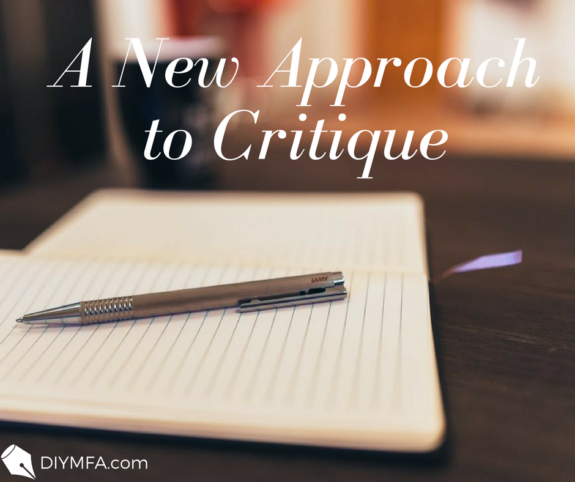As the leader of two writers groups and having led/attended over a hundred critique sessions, I have a lot of experience on which to draw. While many critique sessions go as intended, I’ve seen some go very, very wrong. More times than not, the miss stems from a single reason: readers going into critique to “fix” the author’s story.
It’s a bold observation and even seems antithetical – why critique a piece if you aren’t there to help the author? We are all there to help the author. But the way to help best isn’t to ‘fix’ the piece. ‘Fix’ comes with the attitude that we as author/readers know better than the author about his or her own story.
As critiquers, our goal should be to help the author identify those areas that work, and those that don’t or confuse the reader. We need to retain the author’s voice, not replace it with our own. For people who have found their own writing voice, that can be more difficult than it seems.
People with just a little publishing success and strong personalities often have the most difficult time with this. They translate their own success into the model others must duplicate. Someone less secure in their own writing may take the advice to heart. But in a group of people all doing the same from a different perspective, that can be more harmful than helpful.
We all want to offer others the best help we can. It’s time for a new set of critique guidelines, ones that will offer clear direction leading to a better, more usable result.
So here are my Thirteen Rules of Successful Critique for Critiquers. These are outlined based on groups where the author reads his or her piece aloud to a group, while the group reads along to a printed copy, but can often be applied to other critique structures as well.
Preparing for Critique
1) Begin with a statement from the author of what he or she wants to get out of the critique
Different authors seek different things from critique. Some may want plot suggestions for an unresolved piece. Others may want polishing or to understand when the “reveal” shows itself to you. Know what the author wants and focus on delivering specifically that.
2) Acknowledge that you are not the author of the piece
This is someone else’s story. That means the style of storytelling may be different than your own; honor that. You wouldn’t want someone taking your story and trying to make it fit a style that isn’t yours. It’s not only unfair, it’s insulting to the author.
3) Write your name and email address at the top of the physical page you are notating
If you intend to leave written comments, they shouldn’t be anonymous. Knowing the source helps the author frame them. She may want to follow up later with you. And it makes many people more responsible with the comments they make when their name is actually attached to them.
4) Begin the critique with your pen on the table
Starting with pen in hand announces your intentions to mark the piece up. Your first goal is to listen and read along, and offer suggestions only where needed. Start with the pen on the table.
During Critique
5) Place your focus on elements that interrupt the flow of storytelling
Remember, this isn’t your story. Read the story that is there and follow it. Identify where you are confused or where the flow of the story being told doesn’t work. Inconsistencies in character, irrelevant detailed descriptions, hard-to-follow dialog and plot inconsistencies are all valid story-stoppers. At the same time, notate where things go well…that is part of the value of critique.
6) Mark down grammar corrections, but don’t discuss them in detail
Group time is better spent on more important points of character, plot, and pace than the spelling of individual words.
7) If multiple critiquers are involved, have them all comment on points as they are brought up
Having each person give their individual comments separately on the same points wastes time and creates a disconnect between the opinions on the same topic. Finding a consensus of opinion is as important as identifying that there isn’t one. If you don’t agree with other critiquers’ comments, discuss the differences openly. It helps the author understand the readers’ reaction to different parts without having to intervene himself.
8) Structure your critique response using the sandwich method
Start with what you like about the piece, and end with something positive. Too many people jump into being critical which puts the author on defense and limits his or her ability to actually listen to what should be valid points. It also can obfuscate the really strong points of writing, which should be celebrated.
9) Don’t critique what you haven’t read for yourself
You don’t get to know what happens on page 75 when you are reading page 10. You don’t get to know it in a critique, either. Critique sessions generally focus on a part of a book. Focus only on what is in front of you.
10) Don’t ask an author what he or she meant
It can be hard when you are working with an excerpt, and don’t have the full piece in front of you. It’s impossible to know what descriptions came before when you get a segment from the middle of a novel. But derive what you can from what is there. State what you got out of it so that the author knows, but don’t make them defend what they included (or didn’t include). Let the author decide from your comments whether there is a huge miss in what he or she wrote.
11) Play the role of leader, even if you aren’t
Unfortunately, sometimes a group needs someone to step in and correct the direction of a conversation. Do the entire group a favor and play that role, if even just for the one moment. You’d be surprised how many people will come to you afterwards and say “thank you.” Not everyone has the conviction or courage to step forward and do that.
12) Save direct interaction with the author for the very end of the critique
It’s not that an author should never speak or interact; it can be valuable to the critique process. But done in the beginning, it interrupts the flow of the session, takes the focus off the reader. Leave direct questions for the end, after all of the readers have made their comments on the work and each others’ comments.
13) Finish with a note to the author on the piece in addition to the corrections/observations
If you love it, tell them. After going through the process, it’s easy to focus on the corrections or negatives. Your comment may make the author’s entire day.
I created a humorous video for my writers group to emphasize some of these points. View it right here. If you like it, please let everyone else know with a comment, a click to the LIKE button and share it.
 GARY ZENKER is a marketing professional whose flash fiction and columns have been published a variety of places. He is the co-founder and facilitator of the Main Line Writers Group (now in its eighth year) and the Wilmington Writers Group (now in its fifth year) which help authors of all genre and experience to better their craft and reach their publishing goals in a safe, nurturing environment.. www.garyzenkerstoryteller.com
GARY ZENKER is a marketing professional whose flash fiction and columns have been published a variety of places. He is the co-founder and facilitator of the Main Line Writers Group (now in its eighth year) and the Wilmington Writers Group (now in its fifth year) which help authors of all genre and experience to better their craft and reach their publishing goals in a safe, nurturing environment.. www.garyzenkerstoryteller.com
His new writers tool/party game, WritersBloxx, destroys writers block and turns storytelling into a fun, interactive party game for all ages. Kickstarter for the game runs through July 31, 2017. Offer your support and get a copy for yourself at: https://kck.st/2rYZNPL. Or get more information at www.WritersBloxx.com.







